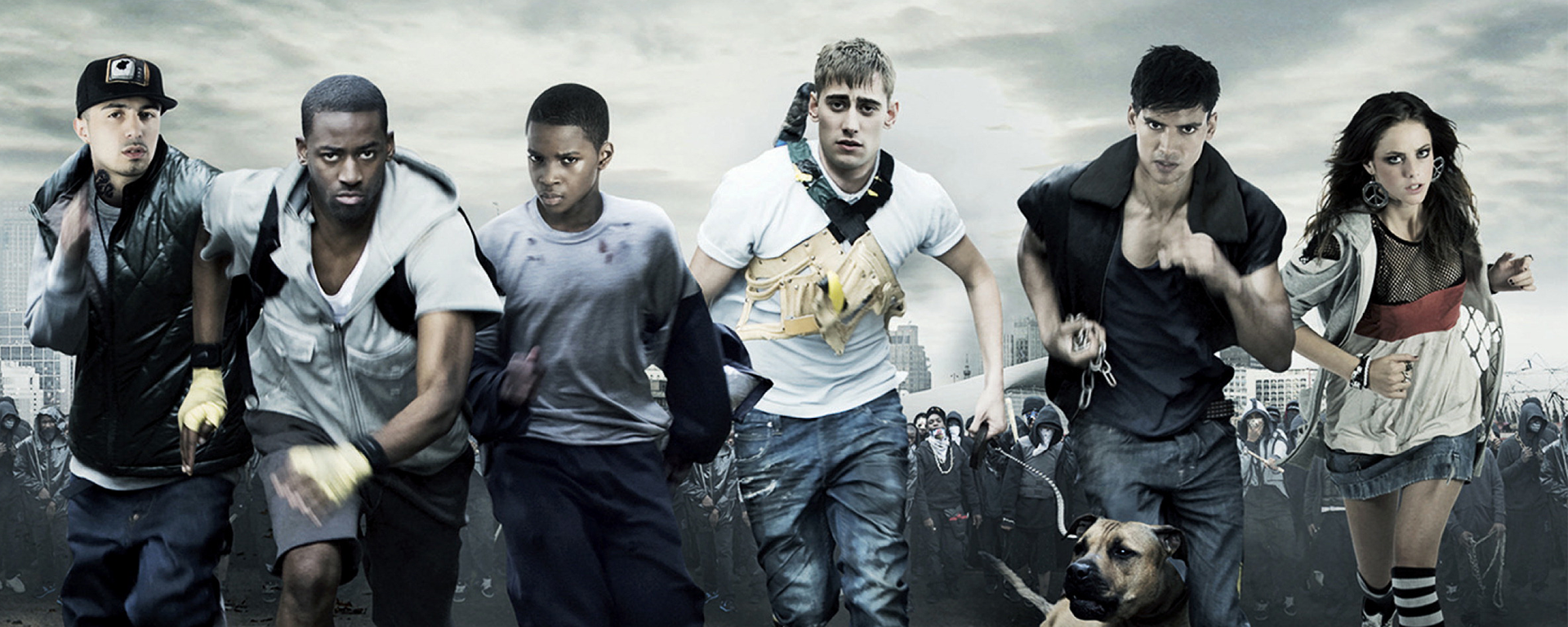Shank is a low budget British feature set in London in the not too distant future. The city has ‘gone to hell’, is suffering a severe food shortage and is overrun by gangs of teens fighting and killing each other for the poor quality food available.
Shank contained several classification issues including:
- Strong language
- Very strong language
- Violence
- Sex references
- Drug use
- Sex references
The frequency of the strong language immediately precluded a 12A certificate. At that category, where teens and younger children (with adult accompaniment) can watch ‘Moderate language is allowed. The use of strong language (for example, ‘fuck’) must be infrequent’. Here with over 100 uses of ‘f**k’ and similar language a 15 was the lowest possible category.
There is also a single use of very strong language when Papa tells Creze ‘Watch your mouth you fucking Northern c**t’. There is a slight comic edge to the use, and whilst it is semi-aggressive it isn’t accompanied by violence or palpable threat, it merely indicates the way a slightly gruff character talks. For that reason it was deemed acceptable at 15, where the BBFC Guidelines state ‘the strongest terms (for example, ‘cunt’) may be acceptable if justified by the context.
The work has a good deal of violence, including several street fights and some sight of weapon use, most strikingly a character posing with and later using hammers. There are some scenes of gang violence when young men and women fight. They include punches and kicks delivered to heads and bodies, a bottle smashed over someone's head, blows with a length of pipe are delivered and people are stabbed. The blows are for the most part impressionistic and feature within rapidly edited scenes so that the violence does not dwell on the infliction of pain or injury. There are none of the strongest gory images that may not be acceptable at 15 and no strong sadistic violence that would similarly be unacceptable.
The occasional use of knives and other readily accessible weapons, such as hammers, within the context of a film set in a recognisable contemporary urban environment (albeit one located some years into a dystopian future) establishes a generally violent world where weapons are used, rather than glorifies their use and violent potential. Neither does the work focus upon nor glamorise the effectiveness of contemporary weapon.
Though there is enough violence and use of weapons to suggest the work is too strong for 12A, it lacks the strong close up detail of impact, intensity or threat or sadistic or sexual edge that would suggest an 18 classification. The film does also attempt to offer a moral message about the futility of street violence.
The sex and sex references are limited to some unconsummated fumbling as some characters get together. The sex references are generally embedded in street talk which carries a crude tone, but no specifically graphic descriptions. We also see a topless woman walking in the street, as Junior talks about his city. The nudity is not dwelt upon and is used to illustrate a society that has broken down.
In terms of drugs we see main character Junior chewing on khat, and then entering an animated world which seems to mirror his drug induced experience. But it’s not a positive experience overall, with Junior taking risks and crashing off his bike. Currently khat is not an illegal drug in the UK. But what properties it does have are not necessarily painted in a particularly good light. In addition we see a party scene and an enthusiastic response to a cannabis spliff, and some arguable glamorisation as the gang members 'party' together drinking alcohol and smoking it. However, they are shown to be hung over in the morning and the film taken as a whole doesn't promote or encourage drug misuse.
Shank also contains a brief dog fighting scene. BBFC examiners must bear in mind UK laws and consider any scene of animals in films very carefully. In this instance the fight scene doesn’t appear to breach either the Cinematograph Films (Animals) Act 1937 or the Animal Welfare Act 2006. When viewed frame by frame, there is no clear sight of actual animal fighting, nor any onscreen evidence that the dogs are being goaded to fury or having terror inflicted upon them. The smart editing gives the illusion of a messy violent dog fight but when the images are seen individually neither dog is seen to be particularly agitated, in many shots they are apart and the few shots of them coming together are still images which are repeated. Most of the scene is, in fact, played off the faces of the watching gangs. There is also a scene where pigeons are chased for food – again there is no direct evidence on screen of any cruelty to animals. What appears on screen was felt by examiners viewing the film to be consistent with the end credit claim that 'No animals were harmed during the making of this film'.
It is worth noting that Shank was submitted to the BBFC for an advice viewing, a process where senior or experienced examiners watch the film and provide the distributor with an analysis of the issues and the likely classification decision. Occasionally following an advice viewing a distributor may opt to cut or re-edit part of the film to achieve the certificate they would like. In the case of Shank, aware of the film’s possible appeal to teens, the distributors were keen to get a 15. The senior examiner viewing the film gave careful consideration to all the issues and felt a 15 was the likely category the work would receive, and that it needed no cuts. When it was submitted again in the same form the examining team agreed.
Shank was selected for National Schools Film Week in 2010.
